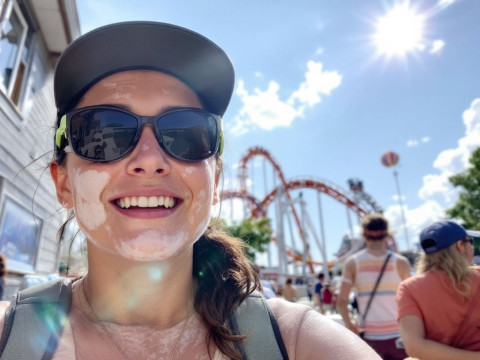You know that moment of dread when scrolling endlessly through your photo gallery, trying to find *that one perfect shot* to post on your brand’s social media account, but nothing seems to align with the vibe you want to present? Yeah, we’ve all been there. That’s where a well-planned Social Media Kit saves the day.
Why Crafting a Social Media Kit Matters for Event Preparation
First things first—what’s the big deal with a Social Media Kit, especially when prepping for an event? If you’ve ever found yourself at the last minute scrambling to pull together content for an event, the value of a ready-to-go media kit will hit home. Event preparation isn’t just about setting up banners and ordering refreshments; it’s also about making sure your social media game is top-notch. That’s where photo ready assets come into play.
An effective Social Media Kit is like having a trusty sidekick that highlights your brand effortlessly. It keeps you organized and brings cohesion to your online presence. Say goodbye to the inconsistency and hello to scroll-stopping branding across all channels. Trust me, it’s a game changer. Now, let’s talk about how you can make this happen.
Setting the Foundation: Breaking Down Your Brand Essence
Before you even touch that camera or design that graphic, hold up. Let’s delve into understanding your brand essence. Sounds fancy, but it’s quite straightforward. This is like that ice cream flavor you always order, symbolic of your taste.
Identify Your Key Elements
To create your Social Media Kit, focus on these elements central to your brand:
- Brand Colors: What hues tell your brand’s story? Is it calming blues or daring reds? Have a palette that mirrors your brand personality.
- Fonts and Typography: Consistency across posts helps keep things looking smart and intentional. Look for fonts that are versatile for any occasion but also identifiable with your brand image.
- Visual Style and Imagery: Is your image style rustic, modern, minimalist? This plays a significant part when choosing photos or creating visuals.
- Brand Voice: Determine the tone of your content — professional, friendly, quirky?
Having these key elements well-defined allows you to move onto strategizing your photo assets for event preparation.

The Building Blocks of Your Social Media Kit Photos
Now, let’s dig into the nuts and bolts of crafting photos for your social media kit. Important note—diverse content keeps your following engaged; thus, don’t just focus on one type of visuals. Mix and match. Think variety but with a uniform style that speaks your brand.
Action Step 1: Plan for Diversity
To be truly photo ready for events, your kit should include:
- Event Action Shots: These capture the essence of the event happening and elicits excitement.
- Behind-the-Scenes: Inviting followers into your creative process can be extremely engaging. It personalizes your brand, making it relatable.
- Product Shots: Featuring your products—especially if you launched them or are showcasing them at the event—can be very effective.
- Participant or Attendee Photos: People love to see themselves, or relate through others’ interaction.
- Event Highlights & Details: These can be things like set up, décor, or even branded elements at the event. Throw in candid images too, showing little moments that matter.
Action Step 2: Know Your Tools
I can’t stress this enough—use tools that emphasize quality over quantity. No need for a fancy camera; smartphones these days have dynamic capabilities. However, decent editing software—let’s say, Adobe Lightroom or Canva—will assist greatly in making your photos pop with ethical application of filters and adjustments.
Action Step 3: Create a Shot List

This will be a lifesaver on event day, especially when juggling a million other things. Forward this shot list to anyone involved in shooting, ensuring everyone captures the key components. Review those previously mentioned jewels (brand colors, style) to confirm alignment.
Putting It All Together: Preparing Your Digital Asset Arsenal
So now you have this lush pile of amazing photos. Awesome! But remember, a cluttered digital home leads to cluttered posts. Organize your assets logically.
Build Your Archive
Create folders categorically for several instances:
- Event-Type Folders: Different categories for different events.
- Style-Based Separations: It could be fashion vs. sports, as per what aligns with your branding.
- Content-Ready vs. Raw Shots: To simplify picking an image for posting held in a thematic context with a solid supporting caption, ready for those last-minute post decisions.
Keep a Style Guide Handy
Don’t fall into the “I’ll remember it next time” trap. Document your style preference in an easy-to-access guide, including things like preferred image settings, go-to editing tweaks, framing suggestions, and anything else quintessential to look out for in post-production. Reference it often.
Establish a Content Calendar
Being event-prepared with a splash of predictability adds less stress to what could otherwise turn frantic when sales, promotions, or special occasions arise. Utilize a simple content calendar linked with your social media platforms, allowing you to schedule posts in advance. This overview visualizes future engagement plans and identifies gaps well ahead of schedule.
Iterative Perfection: When You Hone, Don’t Overthink

Guides laid down? Checklists ready? Superb! But chill if things don’t always tick like clockwork. Evolving your social media kit photos involves experimenting and learning reliably along the way. Not all will be winners, and messy experimentation is absolutely valid. Often great ideas spring from elements you may overlook.
Event Reflection & Analyses
Post-event, it’s time for evaluation.
- Quantitative Measures: Engagement metrics on posts—likes, shares, comments—alt by post type, timing, and content/theme.
- Qualitative Insights: Community feedback, team reflections. Did it resonate as intended? What would you adjust?
Embrace insights, then optimize. If your audience reacted more joyously to BTS hype from your launch, fans want more. Feed those cravings.
Final Thoughts on Becoming Social Media Savvy
A robust social media kit isn’t created from a one-size-fits-all mold but shares snippets digestible through consistent preparation reflecting telling brand epics with sincerity.
Bring dynamic authenticity to your craft; allow constructed plans to remain breathing, elastic templates adaptable per stage performances change.
Uncomplicated not perfection is often the mascot to happier triumphs. Choose genuine portrayals naturally.
Get on with this journey! There’ll be triumphs reflective beyond tangible kit pieces—growth captured aplenty. And hey? The petty quest mid-scroll satisfies, made much simpler by all this forward philosophizing about prepared deliverables.
And there you have it, a real digital wanderer embracing milestones with finesse.
Frequently Asked Questions
What are the key elements to consider when preparing for an event?
When preparing for an event, it is crucial to define the event’s purpose and goals, determine the type of event, and identify the target audience. You should also consider the physical space, including whether there are adequate areas for conversations and if there are isolated spaces that need monitoring. Additionally, think about the logistics such as catering, audio-video needs, and cleaning up after the event[1][3].
How do I ensure the safety and compliance of my event?
To ensure the safety and compliance of your event, you need to refer to the relevant guidelines and policies, such as the Event Registration Process and Environmental Health and Safety department guidance. This includes obtaining necessary permits, ensuring compliance with health and safety standards, and having emergency plans in place[1][3].
What are the different stages involved in event planning?
The stages of event planning include Research, Design, Planning, Coordination, Evaluation, Implementation, and Follow-up. These stages help guide event planners from the initial concept to post-event analysis, ensuring a structured approach to creating successful and memorable events. Additionally, the 5 stages of event management are Initiation, Planning, Execution, Monitoring and controlling, and Closure[3].
How can I effectively promote and manage registrations for my event?
To effectively promote and manage registrations, set up a registration form and landing page, keep the form simple to maximize registrations, and use various channels such as email, social media, and paid advertising to reach a wider audience. Also, send reminder emails to registered attendees and use event management software to streamline the registration and ticketing process[2][4].
References










